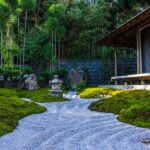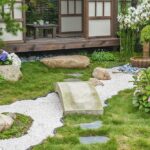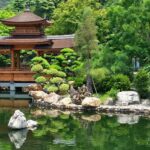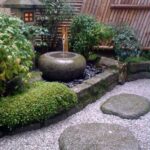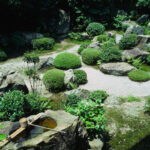Japanese garden design is a unique and ancient art form that has been practiced for centuries. These gardens are known for their serene and tranquil beauty, with carefully curated elements that evoke a sense of tranquility and harmony with nature.
One of the key principles of Japanese garden design is the concept of “wabi-sabi,” which values simplicity, imperfection, and the passage of time. This philosophy is reflected in the minimalist design of Japanese gardens, where each element is carefully chosen and arranged to create a sense of balance and harmony.
Another important aspect of Japanese garden design is the use of natural materials, such as rocks, water, and plants. Rocks are often used to symbolize mountains, while water is used to represent rivers or lakes. Plants are carefully chosen for their shape, color, and texture, and are often pruned and shaped to create a sense of order and balance within the garden.
Japanese gardens are also known for their use of symbolism and metaphor. For example, a stone lantern may represent enlightenment, while a bridge may symbolize the journey from the mortal world to the spiritual realm. These elements are carefully integrated into the design of the garden to create a deeper meaning and connection to nature.
In addition to its visual beauty, Japanese garden design also emphasizes the use of sound and texture to create a sensory experience. The rustling of leaves, the trickling of water, and the crunch of gravel underfoot all contribute to the overall atmosphere of the garden, creating a sense of tranquility and serenity for those who visit.
Overall, Japanese garden design is a timeless art form that continues to inspire and captivate people around the world. With its emphasis on simplicity, natural beauty, and symbolism, these gardens offer a peaceful retreat from the chaos of modern life, allowing visitors to reconnect with nature and find a sense of inner peace and harmony.

